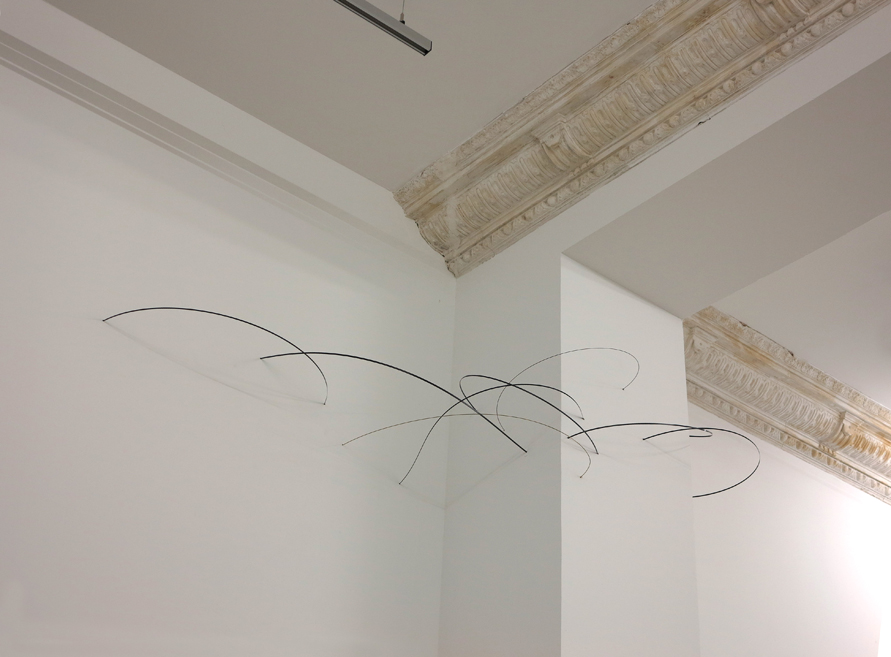Daniel Marzona. Berlin
21 November 2015 – 30 January 2016
Julian Fickler
Olaf Holzapfel
Charlotte Posenenske
Michael Reiter
Gedi Sibony
Martina Wolf
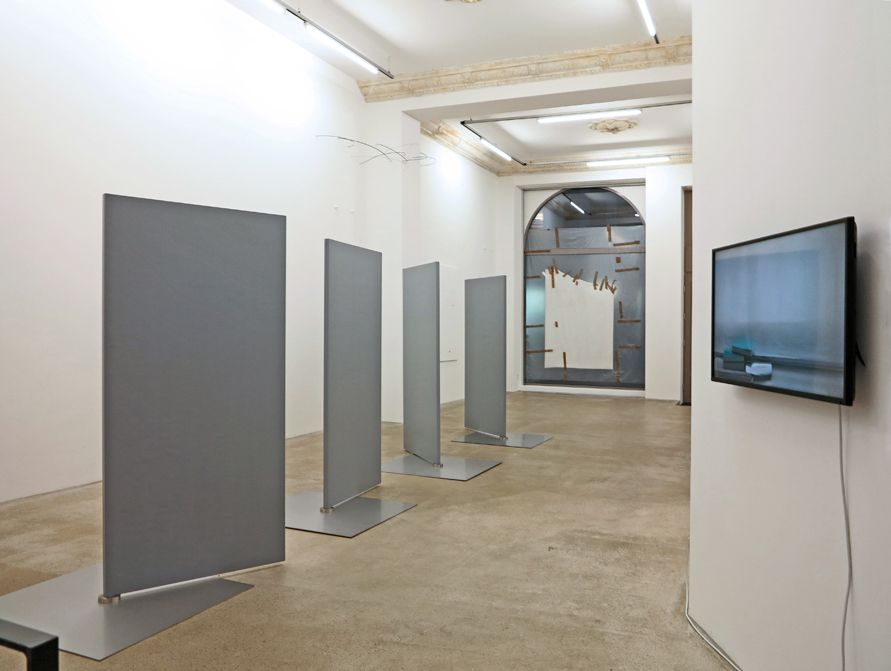
Exhibition view. Charlotte Posenenske, Gedi Sibony, Martina Wolf. Daniel Marzona. Berlin 2015
REDUCING Minimalism always implies reduction: In order to minimize something, there has to be something to be reduced first. Adding and subtracting, or accumulating and
reducing are the fundamental acts here. Reduction may – as is the case in American Minimal Art – be intentional from the outset, or may occur gradually as a result of a sequence of steps in a work process.
In terms of perception reduction is an everyday operation. Confronted with a plethora of visual phenomena, we tend to focus on those aspects relevant to our activities. Having considered the big picture, only a particular section is of interest. This selection is also a cognitive reduction of complexity. The scale of reduction depends on the relevance of the material to our actions. Given that every assertion, every theory is a decision, it is also a reduction and exclusive, provided that the person making the assertion refrains from putting forward any other theories.
In practice these two common mental operations are also based on relevance to activity. They follow an economical, technical, aesthetic or moral principle, or a mixture of these. The manufacture of everyday articles is economical as long as the use of the lowest amount of resources (manpower, time, space, energy, materials) results in the most cost-effective product. In technical terms the aim is to achieve the highest efficiency, in other words to eliminate all non-expedient steps in the work process. This leads to simplification. In aesthetic terms the shape of a modern everyday article is based on its function.
Modern design eschews decoration as an aspect that has no bearing on function. The beauty of an object is the result not of its decoration, but of its straightforward usability. For to a greater or lesser extent moral reasons, Diogenes once threw away his cup when he saw a boy scooping up water with his bare hands. He denied himself possessions, as these were seen as the root of all evil. (Cardinal sins in Christianity are greed, avarice, envy). All religious ascetics who forewent the gratification of physical needs also did so on the grounds of morality. Simplification, frugality, thrift, and material abstinence are all expressions of reduction. When it comes to communication, being short-spoken is considered impolite. Getting straight to the point overlooks the addressee’s status. Orders are particularly short. Throughout the ages, short oration was seen as something the masters did, and therefore as masculine. (Caesar: “Veni, vidi, vici.”) Verbose communication was reserved for certain professions such as storytellers, lawyers, professors, priests and salesmen. There is a tendency in art to push reduction as far as it will go. Good, i.e. radical art goes to the extreme, to the edge, all the way to annihilation. On the other side of the edge lies the void, speechlessness, silence – non-art, everyday life. With regard to art, ceasing to make art is the last reductive step. The exhibited works by Julian Fickler, Olaf Holzapfel, Michael Reiter, Gedi Sibony, Charlotte Posenenske and Martina Wolf follow on in this tradition. Burkhard Brunn
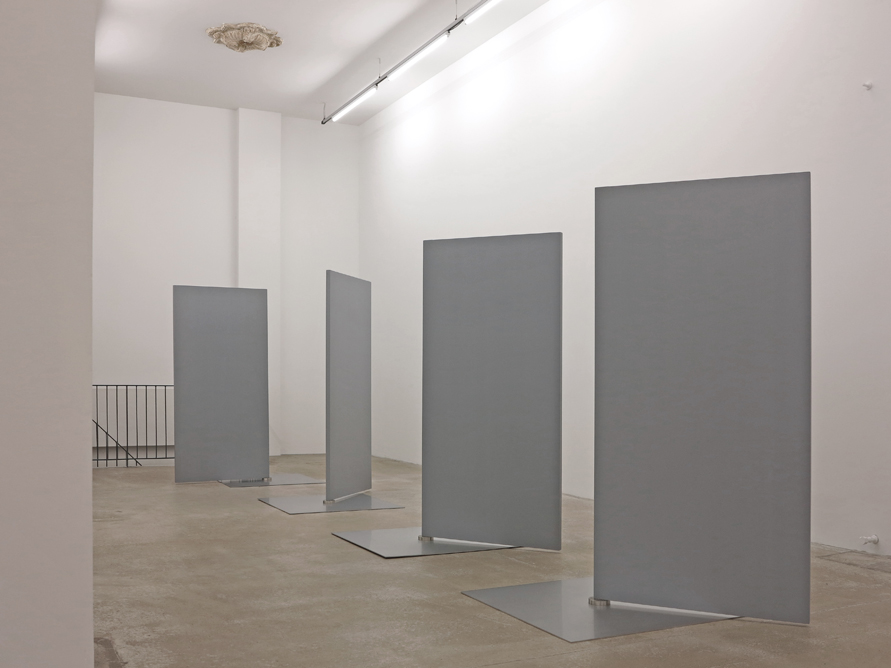
Exhibition view. Charlotte Posenenske. Daniel Marzona. Berlin 2015
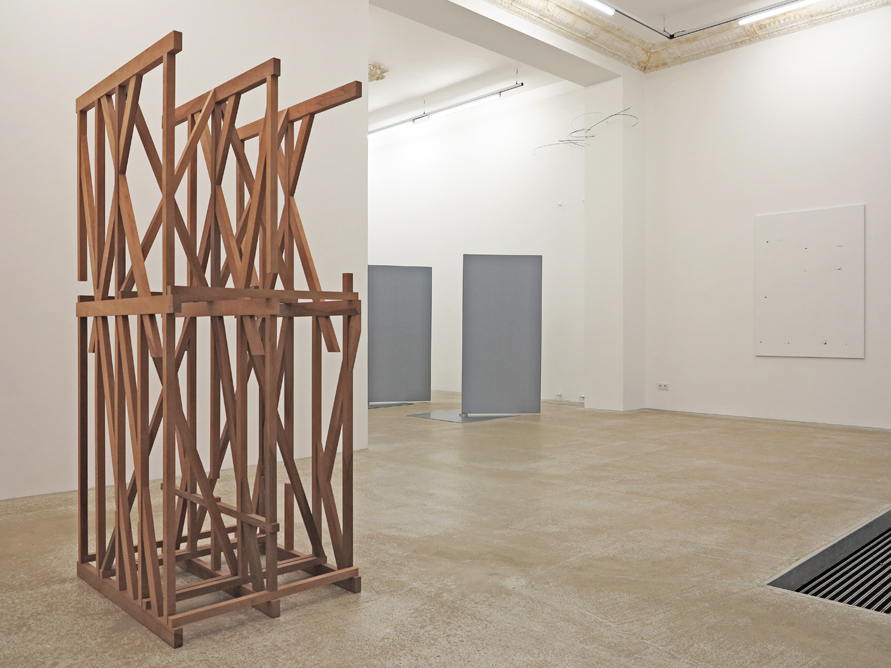
Exhibition view. Olaf Holzapfel, Charlotte Posenenske, Julian Fickler. Daniel Marzona. Berlin 2015
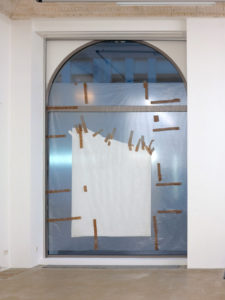
Exhibition view. Gedi Sibony. Daniel Marzona. Berlin 2015

Exhibition view. Julian Fickler. Daniel Marzona. Berlin 2015
